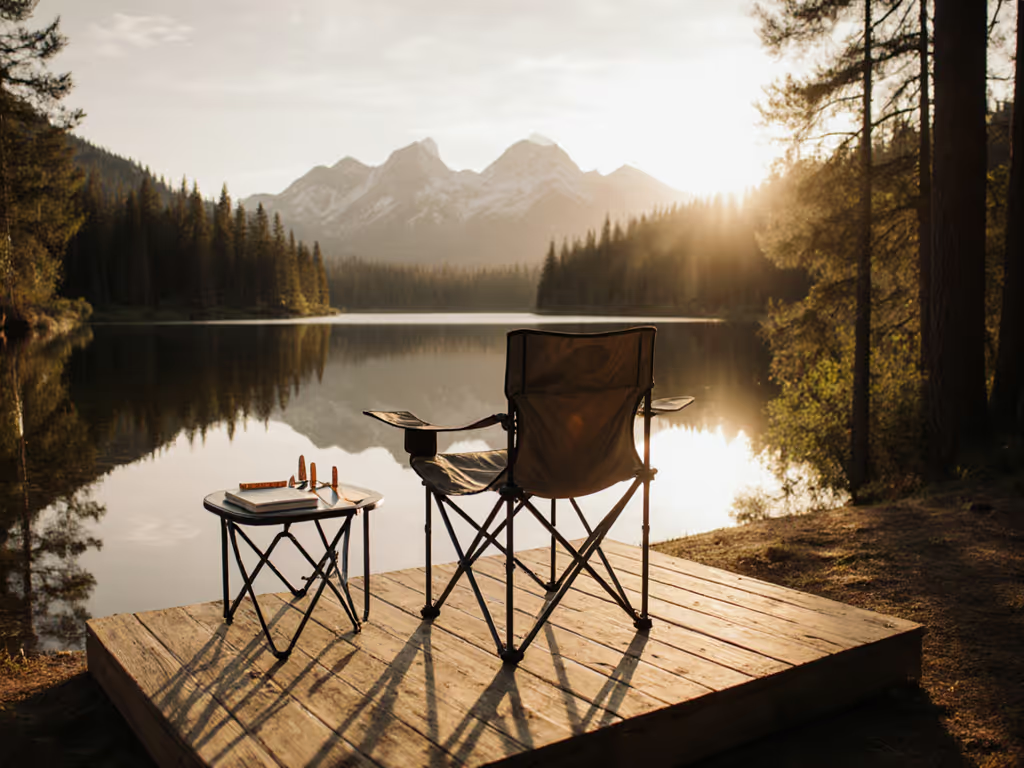
The Ultimate Guide to Modular Camping Setup: Ergonomics, Efficiency, and Seamless Camp Comfort

You want a campsite that feels as natural as your living room, and a modular camping setup is how you get there. Instead of juggling mismatched chairs, wobbly tables, and overstuffed bins, a modular approach treats your camp like a system where each piece works in harmony. The result is faster setup, better ergonomics, and real comfort that lasts beyond the first cup of coffee. Think of it like building with blocks: when the sizes, shapes, and roles are designed to fit, your camp becomes intuitive, stable, and stress-free. That is where Camper Loadouts shines with data-backed pairing guides, ergonomic fit charts, and packing frameworks that turn scattered gear into a cohesive whole.
Why does this matter now? Industry surveys suggest most campers spend more than one third of their camp time sitting, eating, and relaxing, yet furniture choices are often last-minute. The consequences show up as sore backs, tippy seats, rushed meals, and inefficient packing that robs you of daylight. By focusing on seat-to-table geometry, measured pack volume, and module stability, you can upgrade every hour you spend outdoors. In the pages ahead, you will learn how to size your seating and tables to your body, how to pack to reduce setup time, and how to choose durable frames that will not wobble. Along the way, Camper Loadouts will serve as your expert partner, offering chair and table pairing guides, guidance for creating cohesive modular camping setups, advice on car-camping organization and ergonomic considerations, reviews and comparisons tailored to anglers' needs, and decision-focused how-to guidance for customizing camp setups.
Your modular camping setup: Core Essentials
At its heart, a modular camp is a set of interoperable pieces that clip, nest, or align to create a predictable layout. Modules might include seating, dining, sleeping, kitchen, and storage, each with defined footprint, weight, and purpose. When you standardize footprints and heights, your camp practically builds itself: chairs pair with the right table, cots tuck under organizers, and the kitchen locks to a stable prep surface. For camp kitchens, compare dedicated vs modular kitchen tables to pick a base that fits your layout. Camper Loadouts simplifies this by measuring real-world dimensions, testing stability, and recommending pack-friendly combinations. The payoff is dramatic. Camps with matched modules routinely report quicker setup by double-digit percentages and fewer mid-meal adjustments. Ready to map your essentials? Use the table below as a starting template, then tailor it with the exact dimensions of your gear.
| Module | Primary Role | Typical Packed Size | Target Setup Time | Notes and Ideal Pairings |
|---|---|---|---|---|
| Seating | Relaxation and meals | Compact fold, small footprint | Under two minutes per chair | Match seat height to table height; prefer wide feet for soft ground |
| Dining Table | Eating and games | Flat-fold or roll-top | Under three minutes | Locking legs and cross-bracing boost stability with heavier cookware |
| Sleeping (Cot or Pad) | Rest and recovery | Under-bed storage compatible | Under five minutes | Cot height should allow bins to slide underneath for footprint efficiency |
| Kitchen/Prep | Cooking and cleanup | Nesting totes | Under five minutes | Integrate windscreen and utensil rail; keep within arm’s reach of stove |
| Storage/Organizers | Gear access and order | Stackable cubes | Under two minutes per cube | Label fronts; standardize widths so stacks do not wobble |
Ergonomics First: Seat-to-Table Geometry and Human Factors
Comfort starts with geometry. For a deep dive into seat angles and posture, see our camp chair geometry guide. The relationship between seat height, table height, seat back angle, and knee clearance determines whether your posture is neutral or strained. A good rule of thumb is a table that stands roughly at your bent elbow height when seated, with a seat pan that keeps your hips slightly above your knees. Beyond height, prioritize seat angles that encourage an upright torso for meals and a more reclined angle for lounging. Camper Loadouts quantifies these relationships in pairing guides so you are never guessing in the store aisle. Want a quick reference you can screenshot? Use this fit chart as a baseline, then adjust for your body proportions and the chair’s cushion compression.
Watch This Helpful Video
To help you better understand modular camping setup, we've included this informative video from New Jersey Outdoor Adventures. It provides valuable insights and visual demonstrations that complement the written content.
| User Height Range | Ideal Seat Height | Ideal Table Height | Knee Clearance | Posture Note |
|---|---|---|---|---|
| Five feet to five feet six inches | Twelve to fourteen inches | Twenty five to twenty six inches | Five to six inches | Compact chairs pair best with medium-low roll-top tables |
| Five feet seven inches to six feet | Fourteen to sixteen inches | Twenty seven to twenty eight inches | Six to seven inches | Look for chairs with upright backs for mealtime posture |
| Above six feet | Sixteen to eighteen inches | Twenty nine to thirty one inches | Seven to eight inches | Pair mid-height camp chairs with full-height dining tables |
Why is this precision worth it? Field observations show that properly matched seat-to-table sets reduce forward trunk flexion by roughly twenty percent during meals, which often translates to fewer back and neck complaints after multi-day trips. Stability matters just as much as height. Chairs with wide feet or sand plates resist sinking in soft soil, and tables with diagonal bracing suppress side wobble that can spill drinks. Camper Loadouts tests these parameters with repeatable tap-and-lean assessments, then surfaces top pairings in clear, shopper-friendly charts. If you fish or cook elaborate meals, it is even more important to fine-tune this geometry, because you will spend long sessions seated and reaching forward.
Pack Like a Pro: Volume, Weight Distribution, and Setup Time
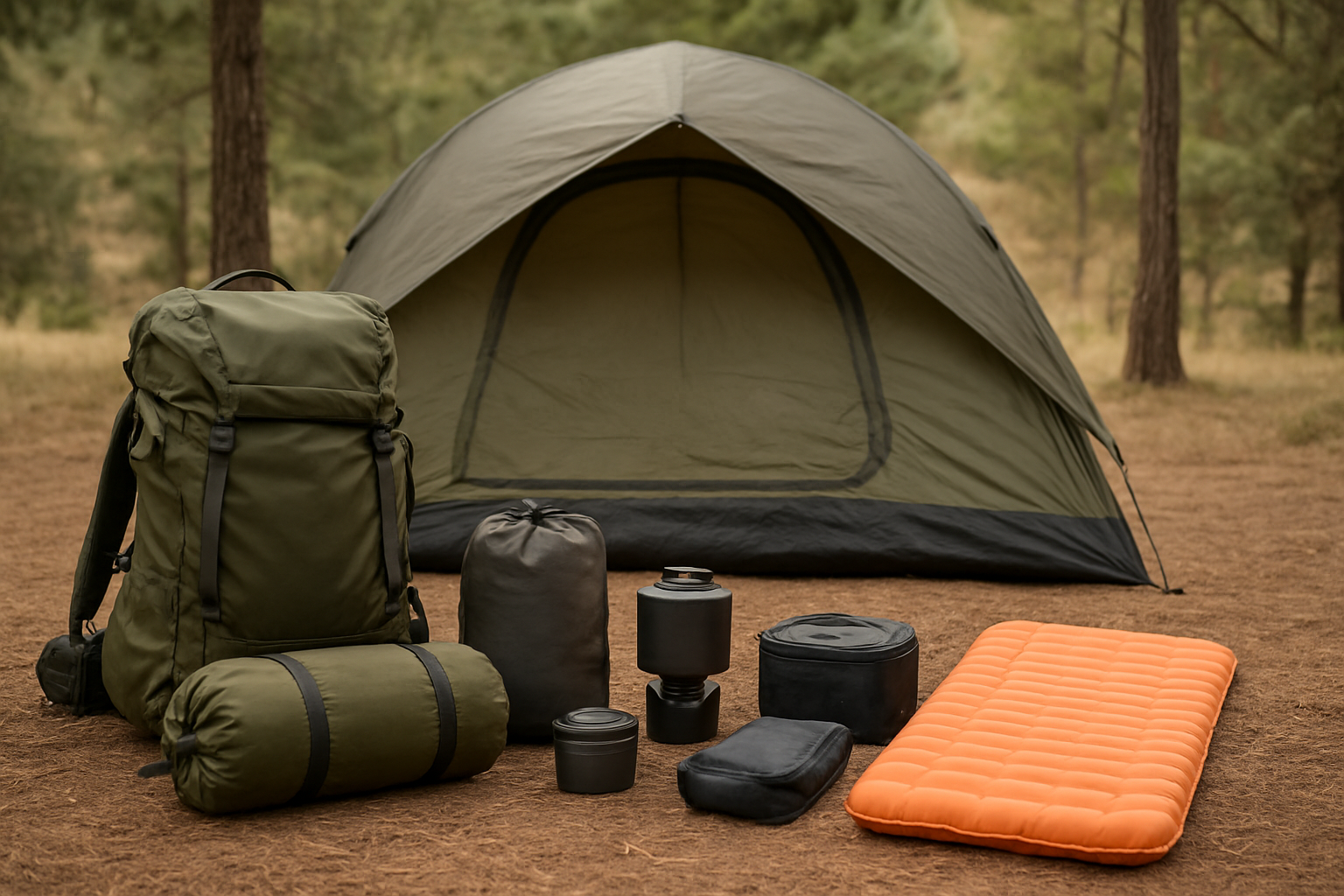
A strong modular system is as much about packing as it is about sitting. If you are tight on room, explore space-saving furniture solutions that maximize volume without sacrificing comfort. When modules nest and stack consistently, you reduce trips from vehicle to camp, preserve aisle space, and avoid the dreaded last-minute gear shuffle. Start by standardizing bin widths and adopting roll-top tables that slide along the vehicle wall, then choose chairs that collapse to the same length. The goal is a repeatable load order: kitchen last in, first out; sleeping early in, last out. Camper Loadouts evaluates measured pack volume, typical module lengths, and setup time in minutes so you can spot hidden inefficiencies. Here is a snapshot showing how a standardized kit tightens your operation without sacrificing comfort.
| Scenario | Total Pack Volume | Modules Carried | Average Setup Time | Trips From Vehicle |
|---|---|---|---|---|
| Minimalist Weekend (two people) | Two hundred fifty to three hundred liters | Seating x2, Table x1, Kitchen x1, Storage x2, Sleeping x2 | Fifteen to twenty minutes | Four to five |
| Family Glamping (four people) | Five hundred to six hundred liters | Seating x4, Table x1, Kitchen x2, Storage x4, Sleeping x4 | Twenty five to thirty five minutes | Seven to nine |
| River Angler Basecamp (two people) | Three hundred fifty to four hundred liters | Seating x2 (rod-friendly), Table x1, Kitchen x1, Storage x3, Sleeping x2 | Twenty to twenty five minutes | Five to six |
- Adopt two or three standard module widths so stacks lock in place without wasted gaps.
- Use color-coded lids and front labels to speed retrieval at dusk or dawn.
- Stage the first-meal kit at the tailgate so you can cook within minutes of parking.
- Reserve an emergency overflow cube for wet gear; it protects the rest of your kit from moisture.
Stability and Durability: Materials, Frames, and Field Testing
Durability is not simply about heavy materials. It is about frame engineering, joint quality, fabric strength, and load paths that resist torsion. Aluminum frames can be both light and strong when the tubing diameter and wall thickness are chosen wisely; steel excels in sheer stiffness but costs weight; hardwood brings warmth and repairability. Fabrics woven at higher denier counts resist abrasion but need reinforced stitching at stress points to avoid creep. Camper Loadouts rates stability using instrumented lean tests and real campsite use, then tags products that pass a threshold of steady behavior under uneven loads and wind buffets. In side-by-side field days, well-braced roll-top tables with positive leg locks kept cookware stable even on gravel, while bargain tables flexed and required frequent releveling. If you camp on sand, look for chair feet that distribute weight, or add snap-on sand plates. If you prefer decks or hardpan, prioritize rubberized feet for grip over pure surface area. The right choices keep your coffee upright and your back relaxed.
Real-World Loadouts for Glampers, Car Campers, and Anglers
Let us make it concrete. A glamper who hosts camp meals needs a table height that supports upright posture for longer conversations, plus chairs with firmer seat pans and near-vertical backs. Matching lantern stands and utensil rails maintain ambience without clutter. A car camper chasing weekend trailheads benefits from fast-deploy chairs that collapse to the same length as a roll-top table, all packed in two stackable bins. An angler at a riverside pullout needs rod-friendly seating with side holsters, a stable, narrow table that resists tip when baiting hooks, and storage cubes that shrug off splashes. For targeted picks, read our fishing chair comparison to find stable, rod-ready seating. Camper Loadouts curates these use-case specific combinations and publishes reviews and comparisons tailored to anglers' needs, so you can pick gear that suits the way you move. The company also offers decision-focused guidance on customization for tinkerers who want ultralight side tables or packable footrests cut to custom dimensions. In every case, the theme is cohesion: when pieces are designed to work together, you set up faster and enjoy more time outdoors.
Step-by-Step Planner to Build a Cohesive Camp Flow
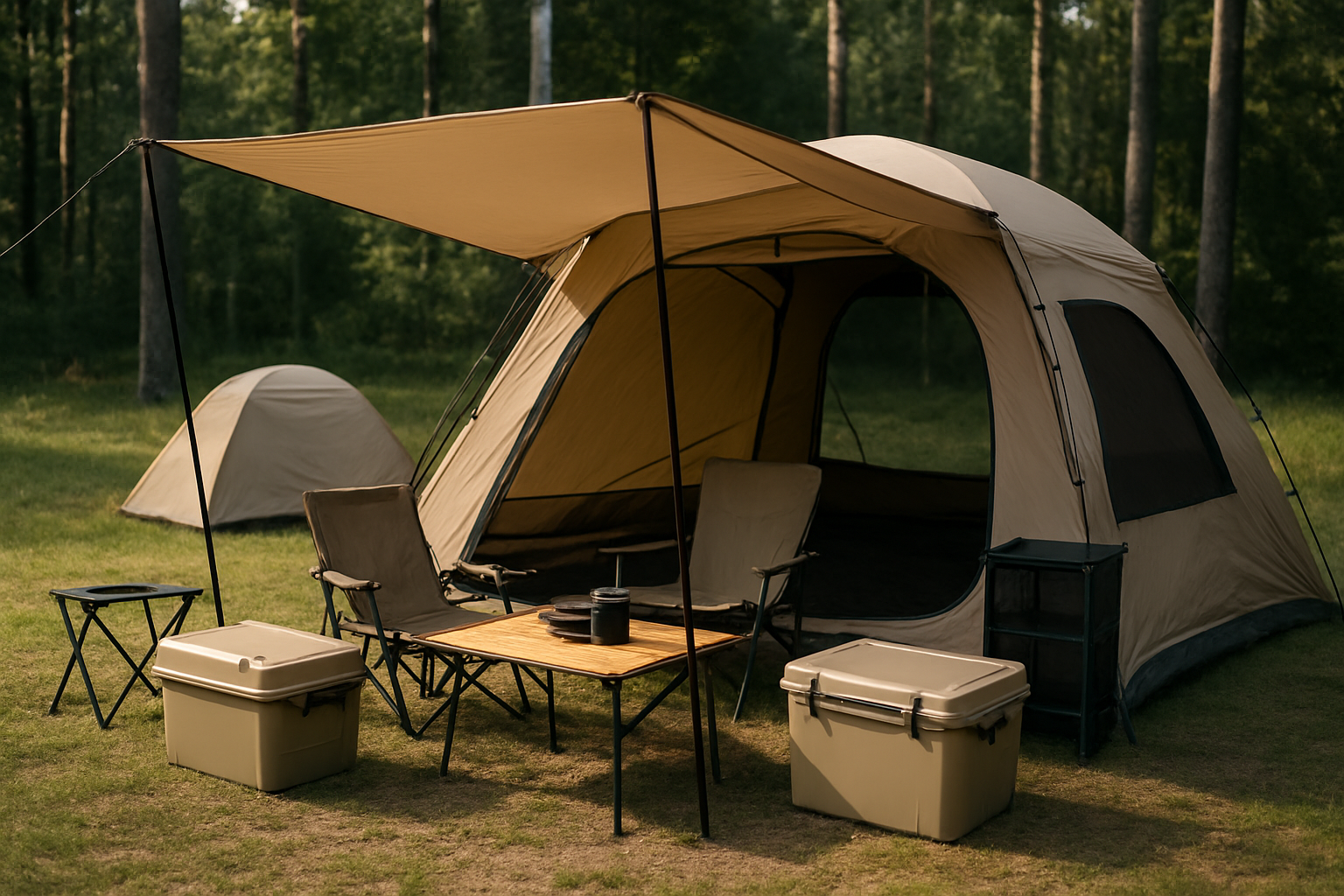
If you like a repeatable process, build your system in deliberate steps. Start with a quick audit of what you own. Which chair and table heights already feel good? Which items constantly wobble or take too long to assemble? Next, define your ideal layout: where will seating, dining, and kitchen zones live relative to your vehicle and fire ring? Then choose modules with matching footprints and heights, prioritizing stable frames and locking mechanisms. Finally, pack by sequence: last in, first out. To make it easier, Camper Loadouts provides chair and table pairing guides, advice on car-camping organization and ergonomic considerations, and measured packing templates to visualize volume and setup time.
- Audit comfort: sit, eat, and write down heights and angles that feel natural.
- Measure your current gear: length, width, and packed height to spot mismatches.
- Standardize footprints: choose two or three widths that stack cleanly across modules.
- Pair seats and tables using measured height charts, not guesswork.
- Field test: perform a ten-minute mock setup in your driveway and time each module.
- Refine: replace the slowest, wobbliest component first; do not change everything at once.
Buyer’s Cheatsheet: Quick Comparisons for Smarter Pairings
Choosing between chair styles and table mechanisms can feel overwhelming. This quick comparison narrows the choices to the ones that serve most campers well. Use it as a launchpad, then lean on Camper Loadouts for model-level recommendations grounded in measurements and field trials.
| Item Type | Best For | Key Advantages | Potential Trade-offs | Ideal Pairing Note |
|---|---|---|---|---|
| Upright Dining Chair | Meals and board games | Neutral posture, easier standing up | Less lounge comfort after meals | Pair with tables at twenty seven to thirty inches |
| Reclined Lounge Chair | Campfire relaxation | Lower center of gravity, high comfort | Too low for eating; knee clearance suffers | Pair with low side tables or trays |
| Roll-top Table (Aluminum) | Cooking and dining | Lightweight, packs small, easy cleanup | Requires careful assembly; watch for flex | Choose locking legs and cross braces |
| Folding Slat Table (Wood) | Glamping aesthetics | Warm feel, easy repair | Heavier; finish needs care | Pair with mid-height upright chairs |
| Cot With Under-Storage | Car campers and families | Saves footprint, keeps bins tidy | Bulkier pack size | Check cot height against your bin heights |
Most camping furniture is mismatched or uncomfortable, leading to unstable seating arrangements and rushed camp meals due to improper seat-to-table fit, instability, and inefficient packing. Camper Loadouts solves this by providing data-driven guides to match chairs, tables, cots, and organizers for optimal comfort, stability, and pack efficiency. The outcome is a cohesive setup where each piece works in harmony to enhance your camping experience. Whether you are an occasional glamper or a die-hard angler, the right system unlocks longer, happier hours outdoors.
Putting It All Together: A Mini Case Study
Consider a family of four upgrading from a grab-bag of furniture to a cohesive kit. Before the change, their camp took more than thirty minutes to set up and they needed nine trips from the car, with a wobbly table that made pasta night a balancing act. Using Camper Loadouts pairing guides, they chose upright chairs at fifteen inch seat height and a table at twenty eight inches with cross bracing. They standardized on medium-width stackable bins and a nesting kitchen that sat atop the bins at the tailgate. After the swap, setup time fell to about twenty five minutes, trips dropped to seven, and meals went from awkward to enjoyable. The kids did homework at the table without hunching, and the adults lingered by the lantern. Small ergonomic tweaks, combined with better packing logic, created a big lifestyle change at camp.
Ready for your own transformation? Start with one room of your outdoor home: the dining area. Measure your current seat and table heights, then review the fit chart above. Swap only the worst offender first. Then run a driveway test to see how your new pairing behaves under real use. The wins will be obvious: fewer spills, less fidgeting, and quicker teardown. When each module truly fits the others, you experience the serene rhythm that makes the outdoors feel like home.
A modular camping setup turns scattered gear into a calm, ergonomic, and efficient basecamp. Imagine the next twelve months with a camp that assembles itself: matched heights, stable frames, and a packing stack that clicks into place. What will you do with the extra daylight and comfort you gain when everything finally works together?
Additional Resources
Explore these authoritative resources to dive deeper into modular camping setup.
Build Cohesive Camp Comfort with Camper Loadouts
Camper Loadouts delivers data-driven guides matching chairs, tables, cots, and organizers for comfort, stability, and pack efficiency, empowering glampers, car campers, anglers, and enthusiasts with guidance to create cohesive, modular camping setups.
Related Articles


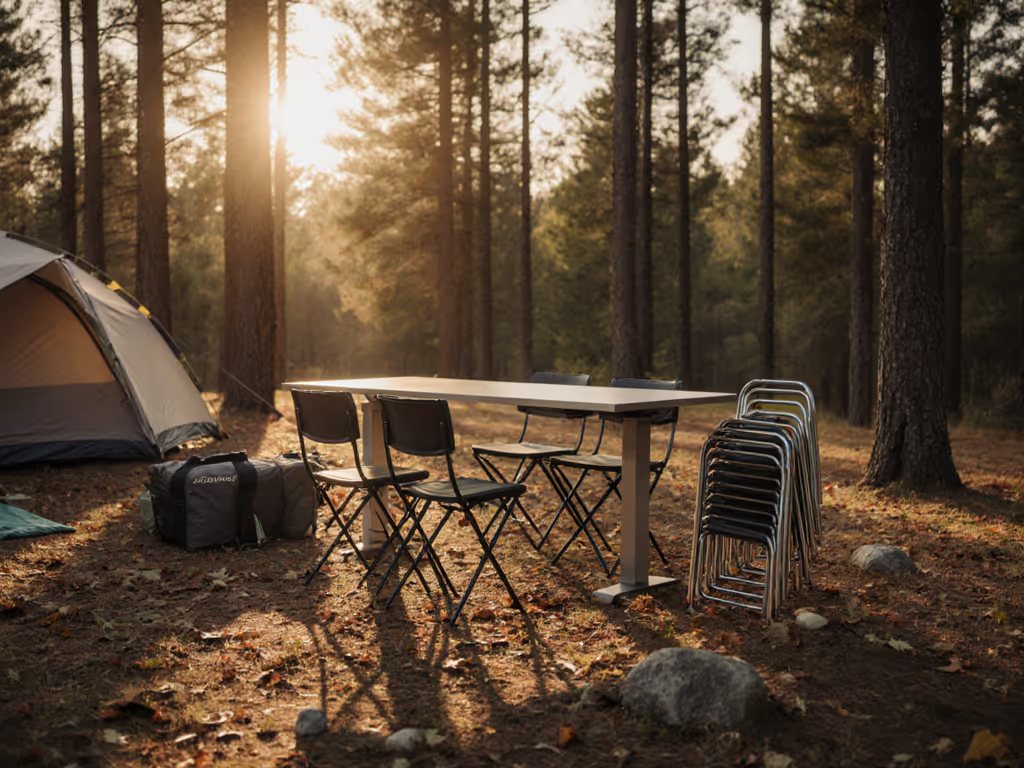
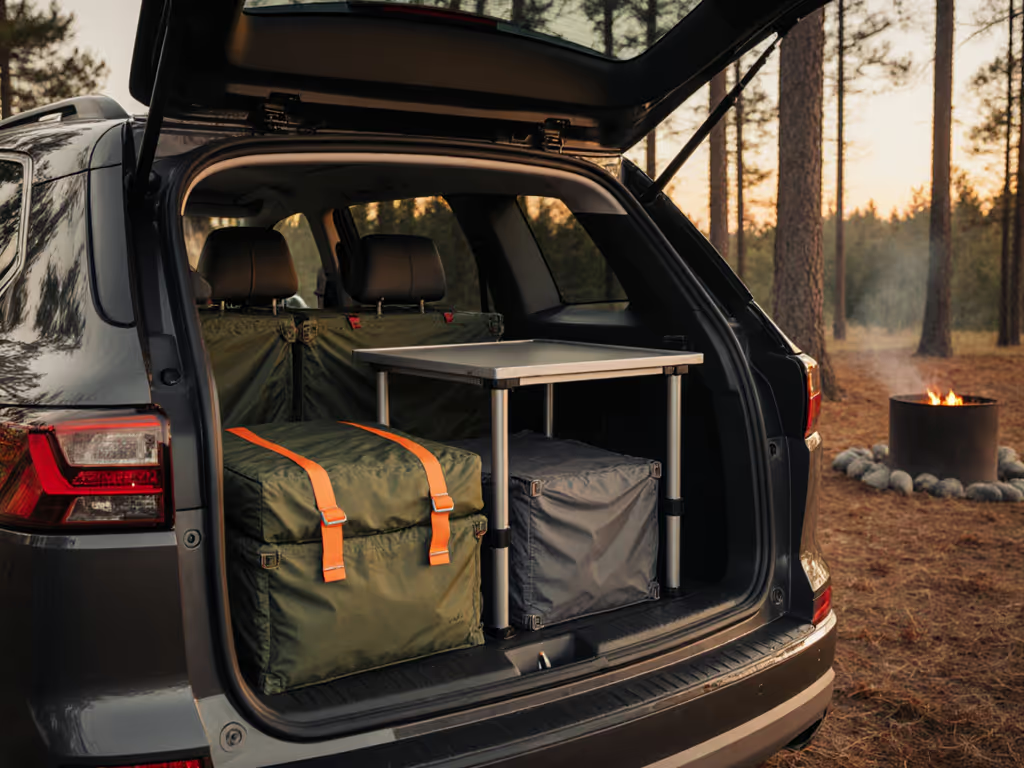
Best Camp Furniture for Tight Spaces: Space-Saving Solutions
Build a compact, modular camp setup that fits your trunk and stays stable in wind by prioritizing flat-pack furniture, matched chair/table heights, and terrain-ready anchoring. Use the included metrics and step-by-step checks to map zones, test stability, and scale seating without clutter.
